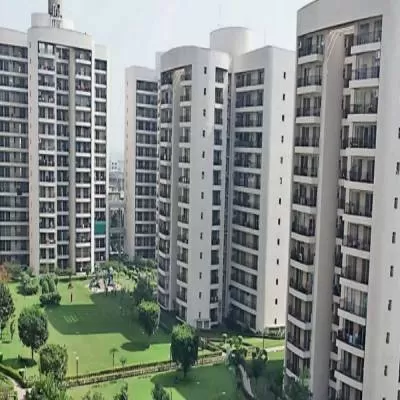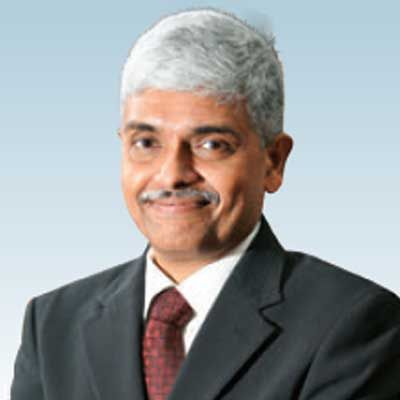- Home
- Real Estate
- Elevating Value
Elevating Value
Read full article
CW Gold Benefits
- Weekly Industry Updates
- Industry Feature Stories
- Premium Newsletter Access
- Building Material Prices (weekly) + trends/analysis
- Best Stories from our sister publications - Indian Cement Review, Equipment India, Infrastructure Today
- Sector focused Research Reports
- Sector Wise Updates (infrastructure, cement, equipment & construction) + trend analysis
- Exclusive text & video interviews
- Digital Delivery
- Financial Data for publically listed companies + Analysis
- Preconceptual Projects in the pipeline PAN India
- compact gearless machine
- Pulse™
- ReGen™ drive
- LED TVs
- Ajay Nahar
- Sandip Shah
- EEST
- escalators
- N Kalyanaraman
- Affordable housing
- Pradhan Mantri Awas Yojana
- Smart cities
- Ports
- metros
- World Trade Centre
- Brigade Group
- infrastructure
- KONE India
- Amit Gossain
- Otis India
- Sebi Joseph
- Elevators tailored
- Manish Mehan
- thyssenkrupp Elevator
New developments in the vertical mobility solutions market include elevators tailored for affordable as well as premium realty, and 24 x 7 service assurances.The Indian elevator and escalator industry is currently pegged at Rs.100 billion, or around 55,000 units, according to Manish Mehan, CEO & Managing Director, thyssenkrupp Elevator (India). Industry sources suggest that escalators make up barely 2-3 per cent of this market, as these are only relevant for specialised buildings such as hospitals and malls, and infrastructure such as metro and railway stations. However, with escalators making up 10 per cent of the vertical mobility solution market in developed regions, there is considerable scope for these products. Elevators are mostly being deployed in residential and commercial real estate.“Residential real estate is an important part of our business given urbanisation trends across India,” says Sebi Joseph, President, Otis India. “In general, the residential sector absorbs 70-80 per cent of the elevators sold. In this space, buildings that are less than six to seven stories high make up the biggest segment, which is well served by Otis’ Gen2 core elevator that runs at 0.7 m per second.”Demand for elevators, escalators and travelators is being pushed mainly by growth in the commercial segment and some revival in the residential market during H1 2019, according to Amit Gossain, Managing Director, KONE India. “Commercial realty, especially the office space and the rental market, is doing well in micro markets, and has grown owing to long-term investors, increase in demand from the IT/ITeS sectors and the rising popularity of co-working.” Future driversMehan expects 6-8 per cent annual growth driven by urbanisation in mega cities and mega regions. “By 2025, India is expected to have 25 mega cities with a population of over 8 million, and four mega regions, each with a population of over 15 million,” he elaborates. “A city’s density is directly proportional to the height of buildings and overall infrastructure development. India currently has 53 cities with a population of a million. It will have 68 such cities by 2030.” He points out that urbanisation will necessitate at least 2 million houses annually and believes the development of 100 smart cities holds a lot of promise.Joseph predicts the residential space will continue to dominate demand while the commercial sector will continue to be significant. Otis has recently bagged an order to provide 58 elevator and escalator units including the SkyRise, OH5000, Gen2 Regen and the CompassPlus to the Brigade Group for World Trade Centre, Chennai, which will be the city’s tallest commercial development on completion spanning 2,500,000 sq ft over five towers housing offices, a hotel, restaurants, cafeterias, conference halls, an exhibition centre and residential units. Additionally, he expects smart cities, ports, metros and airports to boost growth. Otis recently secured a win for 112 units of the Gen2 for Bengaluru Metro.Gossain expects demand from the residential sector to improve following a slew of measures to ease finance for the housing sector from non-banking finance companies and public-sector banks, the finalisation of the modern tenancy policy to promote rental housing, increased demand for low-cost housing units and the construction of 1.95 crore housing units under the Pradhan Mantri Awas Yojana from FY20-22.Affordable housingAffordable housing is expected to account for 85-90 per cent of residential development over the next decade while mid-income housing will enjoy 7 per cent of housing demand. This will translate into 3-3.5 million houses annually. Not surprisingly, Mehan considers elevators for the affordable housing sector “a fast-growing segment”.thyssenkrupp has recently launched the enta100 MRG, a value-for-money elevator made in India targeting the affordable housing segment. “Affordable homes do not just mean the cost accessibility of the home but lower operational and maintenance costs,” says Joseph. “Otis’ flagship technology platform, the Gen, offers environmentally responsible elevators.”Safe installations “Safety is our overriding concern, especially in high-rise developments where we aim for a factor of safety that is 20 per cent more than required,” says N Kalyanaraman, COO, Navin’s.To achieve this safety, he explains, “We evaluate the diameter and the strands of the rope, the number of ropes. For smooth, level landings, we opt for variable voltage variable frequency technology. We install fire-fighting and communication devices in elevators as the mobile signal drops within. We install automatic rescue devices to protect passengers against entrapment in the eventuality of a power failure, and ensure these are operable through battery. We frequently monitor the battery to ensure it is functional.”Periodic inspection of equipment is essential for passenger safety. In this context, KONE India has recently launched KONE Care 24/7 Connected Services in India, a system that monitors, analyses and displays in real-time vast amounts of operational data from elevator and escalator sensors, to improve performance, reliability and safety. “With 24/7 Connected Services, data relating to key operating parameters, usage statistics and faults is gathered from elevators and escalators,” says Gossain. “All the information is sent in real time to the cloud service, where the analytics are located. If the system identifies the need for maintenance, it either alerts a technician immediately or contacts technical support or customer service, according to how critical the problem is, thus minimising the number of faults. If a fault occurs, detailed information tells us what’s causing the issue and how urgent the matter is. Through 24/7 watch, we can respond quickly in case of sudden failures.”Otis offers the Web-based EMS Panorama system for elevators and escalators for the building staff to monitor, control and report on operation-critical functions in real time from any computer with an Internet connection. With this system, managers can quickly respond to passengers’ needs and make informed decisions about equipment operations.Typical safety features built into thyssenkrupp elevators include an automatic rescue device, over-speed governors, technology that gradually stops the elevator in case of a safety activation to protect passengers from tripping, full-height infrared curtains to protect passengers from being hit by the leading edges of doors, and safe door systems to prevent the door from opening when the elevator is between floors.Safer ridesEarlier this year, a young child fell to death from an escalator in a mall in Ranchi. Such accidents bring the focus back to safe usage. Supervising the use of elevators and escalators can help prevent accidents. That said, in general, “Everyone who uses an elevator or escalator needs to be conscious and alert of their own behaviour; for example, making sure children’s hands are held when riding an escalator and not blocking closing elevator doors,” points out Gossain.To raise awareness on safe elevator and escalator riding behaviour, Otis India in partnership with the Elevator Escalator Safety Trust (EEST) delivers the Safe-T Rider programme for school children and adults, a welcome step for the country indeed.Customized installationElevators are selected to match the features of a property. For instance, customers buying into luxury developments expect the fastest and safest technology. Premium properties are seen to be smart buildings. And “elevator systems are an essential part of smart buildings, being one of many systems providing better comfort, efficiency, resilience and safety to tenants,” says Sandip Shah, AVP-Head, Contracts & Procurement, Omkar Realtors & Developers. Omkar’s uber-luxury project Omkar 1973 in Worli, Mumbai, has high-speed (6 m per second) elevators to take tenants to the top 73rd floor at a height of 270 m in just 45 seconds. Card access systems and mobile SMS access provide privacy to individual apartments. The destination-controlled advanced secured transit management system provides security. Energy-saving regenerative drives supply power back to the building.thyssenkrupp is installing five elevators of 6 m per second speed at Ruparel Realty’s upcoming luxury high-rise project Ruparel Ariana in Parel, Mumbai. Each customised elevator will make 70 stops as it traverses 244 m. It will feature noise-reducing materials from moving components, energy saving, a high-precision motor system that results in smooth braking and accurate levelling.Excalibur, a project developed by the Nahar Group, Mumbai, was aimed to be a building for apartment owners built around the theme of timelessness. As such, the design brief mandated interiors and amenities that would give occupants an unforgettable, extraordinary experience. “Timelessness has been built into the design, including the elevator,” says project leader Ajay Nahar, Managing Director, Nahar Group. “Excalibur’s elevators exemplify how a brand can be imprinted on an elevator. This is important because a brand reflects our ideologies and we seek to protect it.” Excalibur’s elevators’ customised branded interiors include air-conditioning, sofa seating, LED TVs, ambient lighting through chandeliers and the brand logo laser etched on doors. Smart elevator and access card elevator control systems safeguard apartment owners. The elevators traverse 20 floors at 2.5 m per second, up to the terrace sky garden at a height of 101 m.Sometimes, developers need elevators installed speedily and, hence, choose a provider that can deliver in the necessary timeframe. KONE’s collaborative creative team works with a focused approach, highly efficient installation methods, strict quality criteria for each phase of installation and site audits ensuring ‘first time right every time’. For instance, in a project situated 350 km from Guwahati, installation of the elevators (manual with a full mid-bar collapsible gate and imperforate gate, with 0.63 m per second speed up to the seventh floor) was made possible in 15 days as against the conventional 10 weeks.Made in IndiaOtis India has a factory in Bengaluru as well as an R&D centre with mechanical and electrical test labs and a 51.2-m test tower with the ability to simultaneously test up to five elevators. This factory has released Gen2 elevators of various speeds and types designed for Indian customers. “Last year, our Bengaluru factory released Arise, a 2.5 m per second elevator, as well as escalators,” shares Sebi Joseph, President, Otis India. “Now, Otis India is gearing up to embrace IoT and digitalisation for quicker and more efficient services.”Otis India has just launched the made-in-India Gen2 Life elevator for upscale residential and commercial buildings. Passenger capacities range between eight and 15 with speeds of 1.5 and 1.75 m per second in both the machine room or machine room-less configurations, with additional elevator cabin interior options, steel-coated, flat-belt technology, a compact gearless machine, Pulse™, ReGen™ drive and energy-efficient operations.thyssenkrupp has localised some of its products and services. Its Indian product line is robust and designed for Indian aesthetic tastes, and includes technologically advanced, high-speed (6 m per second) elevators. This includes the enta100 MRG targeting affordable housing projects, and the enta200 and meta100 designed for the growing low and mid-rise real-estate markets.




















